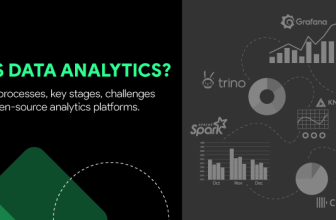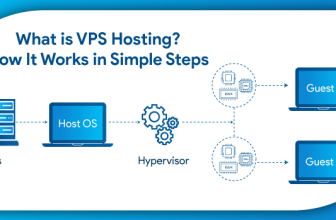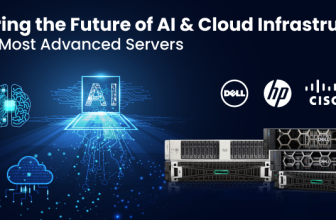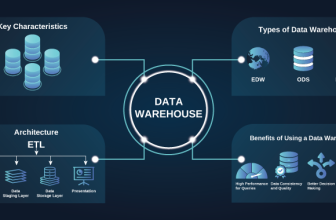
Despite the rise in use of non-relational databases, about 49% of developers apply a combination of Relational Database Management Systems and NoSQL or non-relational databases. So, we can say there is still a strong dependence on traditional RDBMS systems. While businesses use both types of databases, let us learn how they differ and what their applications are.
What is a Relational database?
A Relational Database or SQL (structured query language) database is composed of columns and rows, where data is saved in a table format. The data is later linked to the data in the other tables through the use of unique identifiers called keys. As the name suggests, SQL databases store structured data like names, dates, and quantities that can be easily identified in a table. Microsoft SQL Server and MySQL are two popular examples.
Key Features
Relational Table Structure — Data is stored in rows and columns, which are linked to the other tables through common or primary keys.
Based on a Fixed Schema — The structure of tables and their relationships need to be clearly defined and strictly adhered to before the data is stored.
Vertical Resource Scalability— Handle query growth or the dataset evolution by adding more processing power or memory to a single server instead of distributing data to multiple other servers.
ACID Principles Compliance — For reliability, integrity, and accuracy of data while performing inserts, updates, or deletes, ACID principles (atomicity, consistency, isolation, and durability) are applied.
Powerful Data Query Capabilities — Offers capabilities to perform advanced data operations for accessing, analysing, and real-time data manipulation.
Advantages:
- Due to the ACID compliance, relational databases maintain high reliability in database transactions.
- The primary and foreign keys ensure there is no duplicate information, helping enforce data accuracy.
- Reduces storage costs as the process of normalization organizes data and removes anomalies.
- SQL databases are simple to interact with and use English-like syntax, making it easy to use even for non-developers when they want to generate reports or queries.
Disadvantages:
- RDMSs require improvements in server hardware in case there is an increase in data size or frequency of access, making scaling incredibly expensive.
- Due to the rigid nature of the schema, which must be decided at the start only, making changes to the data structure becomes very difficult later.
- When the relational databases scale, query performance degrades as the table relationships get complex, and when the data volumes increase.
What are Non-Relational Databases?
A non-relational database does not need tables to store data; it stores it in the format that is best for the data type being stored. In effect, NoSQL can contain unstructured data like email messages, videos, images, business documents, etc., which cannot be standardized easily. A blend of unstructured and structured data can also be stored in them. MongoDB and IBM Cloudant are the most common NoSQLs.
Key Features:
Non-Relational Structure— Non-table formats like documents, key-values, graphs, and wide columns, or whatever format is best for the data being stored, are used.
Uses Evolving Schema — It uses schema-less or flexible schema design where the schema can evolve with time. Different data types, attributes, and diverse formats can be stored.
Horizontal Scalability— Allows data distribution across multiple servers, enabling massive data handling and cost-effective scaling.
NoSQL Query Languages — Uses non-SQL syntax in the form of custom query languages and APIs that are designed specifically for a particular data model.
Advantages:
- Being less structured and independent, NoSQLs can be scaled horizontally and vertically, giving them an upper edge over SQL databases.
- NoSQLs can store large datasets, widening their use cases to more industries and businesses where large data are used. It makes data analysis easy and user-friendly.
- They need less coding, easing the tasks for developers as they need to put less effort to get started directly.
- NoSQL databases are easy to scale as the data can be distributed horizontally across multiple nodes.
- They lead to faster results because the performance can be optimized for different data models and scenarios.
Disadvantages:
- NoSQL, being new, is less developed and is a little difficult to understand, unlike SQL databases that have a lot of modified versions, online help, etc.
- Since NoSQLs lack standard query structures, programmers need to spend more time customising and writing queries.
- Since there is no atomicity, the accuracy of data in non-relational databases is significantly lower.
Difference between Relational Database vs Non-Relational Databases
| Feature | Relational Database | Non-Relational Databases |
|---|---|---|
| Schema Structure | Pre-defined and rigid Schemas | Flexible Schema |
| Data Model | Stored in a table format in rows and columns | Data is stored in flexible documents or key-value formats |
| Consistency | Adherence to the ACID principle assures consistency | NoSQL prioritizes availability over consistency |
| Querying | Uses powerful standardized SQL Syntax | Non-SQL syntax and APIs |
| Scalability | Scales only vertically | Scales vertically and horizontally |
| Performance | Faces bottlenecks when large volumes of data/high throughput are involved | Delivers superior performance due to a distributed architecture |
When to Use Relational vs Non-Relational Databases
- SQL databases are the best for transactional operations like e-commerce and financial applications. Such data requires ACID compliance to ensure integrity and data reliability.
- SQLs can be best applied for analysis and business intelligence. Since they have a standardized language and better data integrity, they are more reliable for accurate reporting and insights.
- When you have a large amount of data to work with and the data is unstructured, the use of NoSQL is suggested. e.g., social media sites, gaming, etc., need flexible schemas and horizontal scalability.
- Use NoSQL when the developer needs to deliver the project faster, and there are chances that the data requirements may evolve later. The development can be accelerated by its schema-less design and APIs.
- Many modern enterprises mix relational and non-relational databases to benefit from the strengths of both. e.g., web applications use MySQL to store data about user accounts like purchases, but may utilize MongoDB for comment threads and logs.
Frequently Asked Questions (FAQ's)
What Is a Relational Database Model?
The relational model refers to the way the data is stored and administered in relational databases. Data is structured in a table format in rows (tuples) and columns (attributes). Here, every row represents a record, and the column represents the attribute of that record. It uses a predefined schema with which data integrity and relationships are maintained.
What Is a Relational Database Management System?
A relational database management system (RDBMS) is a software that enables IT teams to create, administer, update, and communicate with SQL databases. RDBMS stores data in a tabular format and uses Structured Query Language (SQL) for database access. The RDBMS provides a method to store and retrieve large volumes of data, offering easy implementation and system performance.
Are relational and non-relational databases compatible with one another?
Relational and non-relational databases have different structures and data handling methods; hence, they are not directly compatible. However, they can co-exist in modern applications with the help of APIs, tools, etc. This enables the hybrid architecture for workloads.
What are typical use cases?
Ideal use cases of SQL databases include ERP, CRM, financial transactions, banking systems, inventory, and supply chain. NoSQLs are ideal for Big Data, real-time analytics, CMS, social media platforms, gaming, IoT sensor data storage, mobile app backends, and more.







